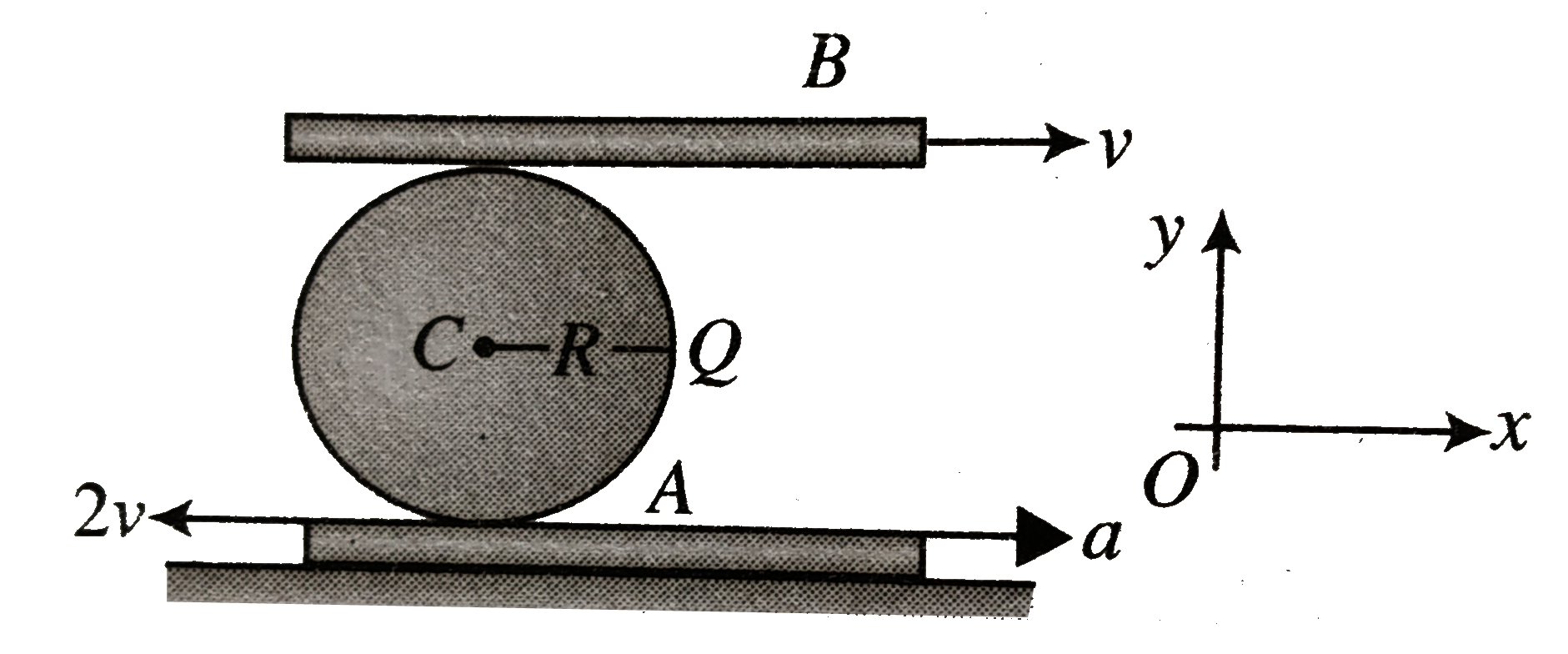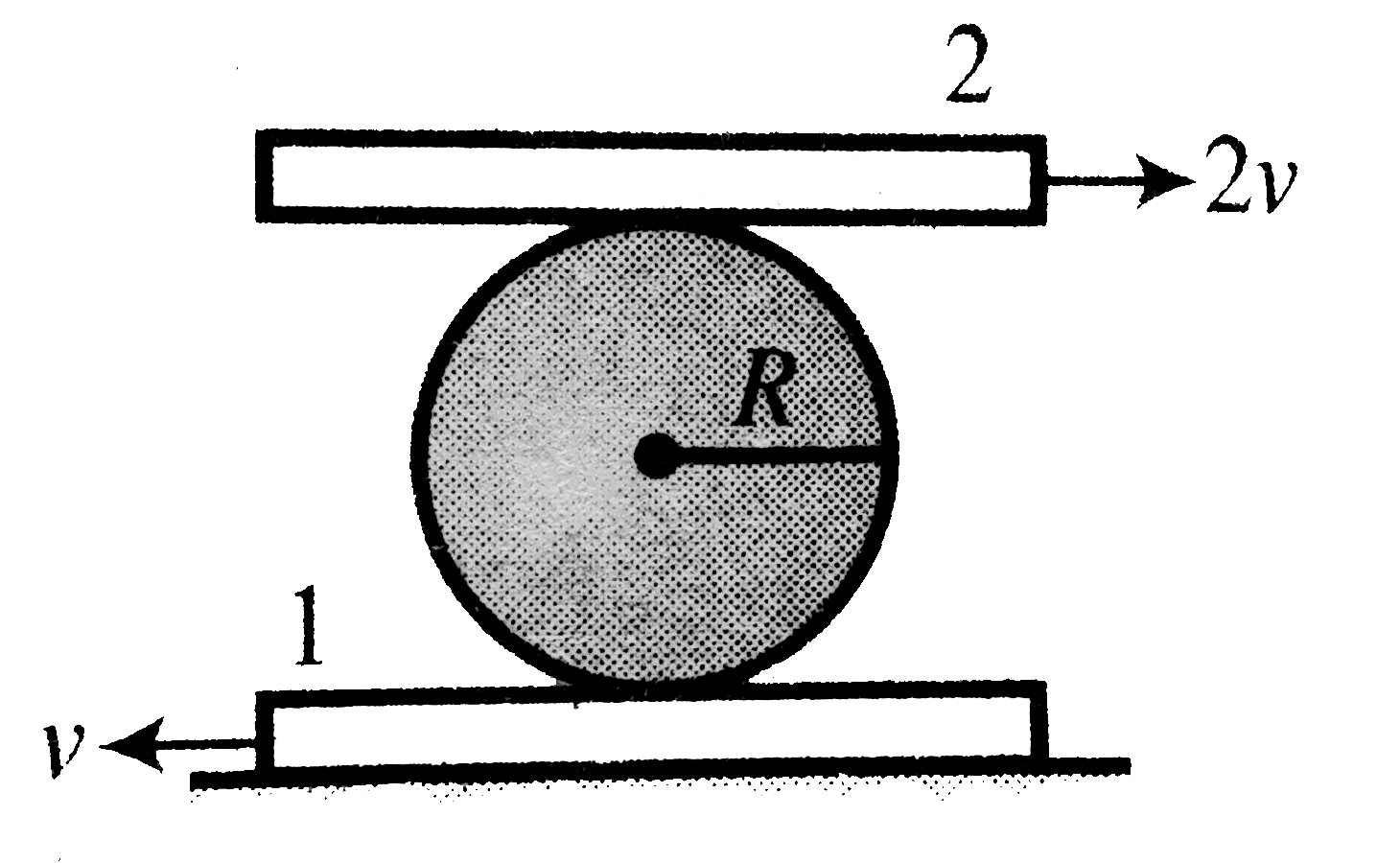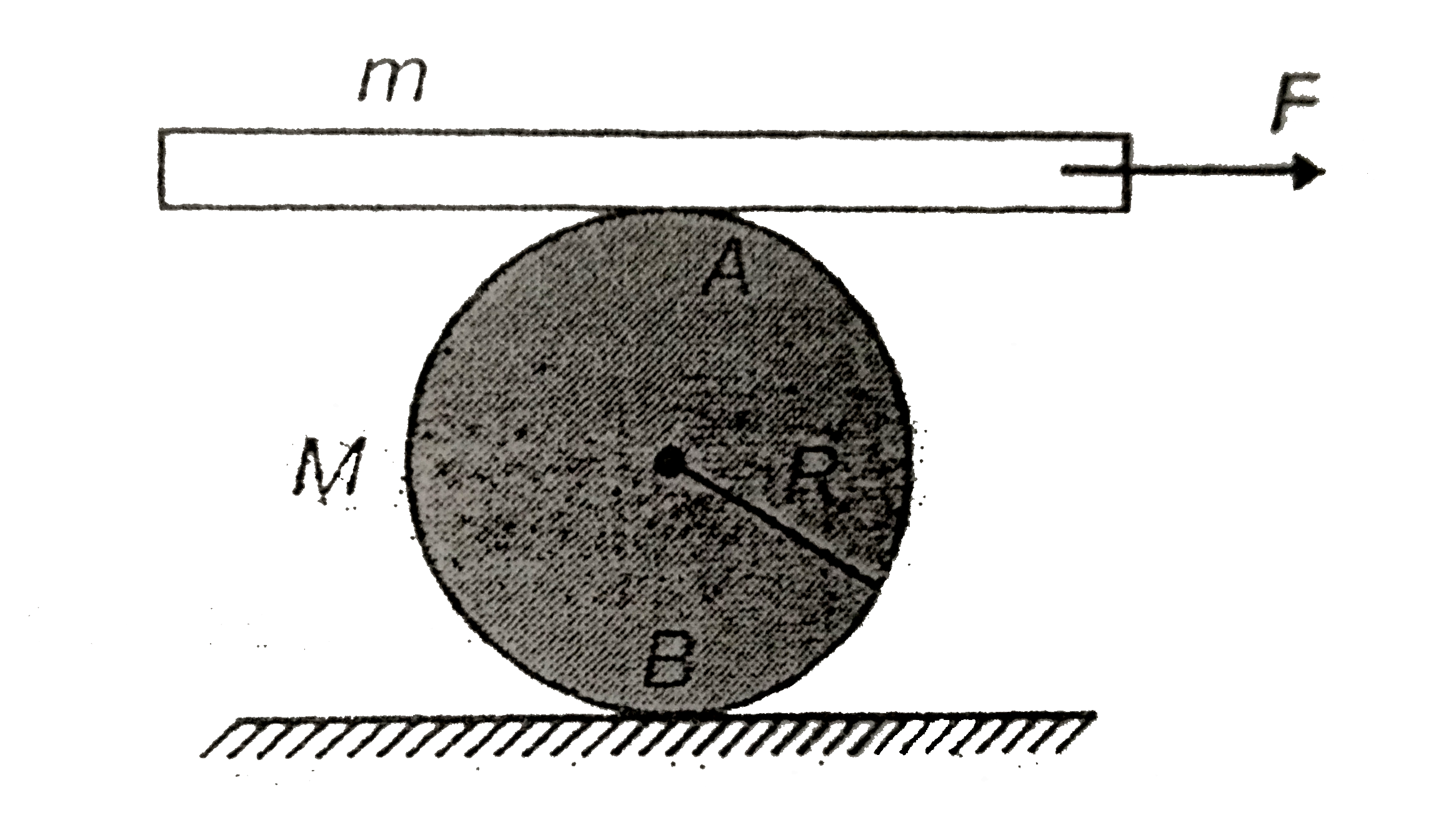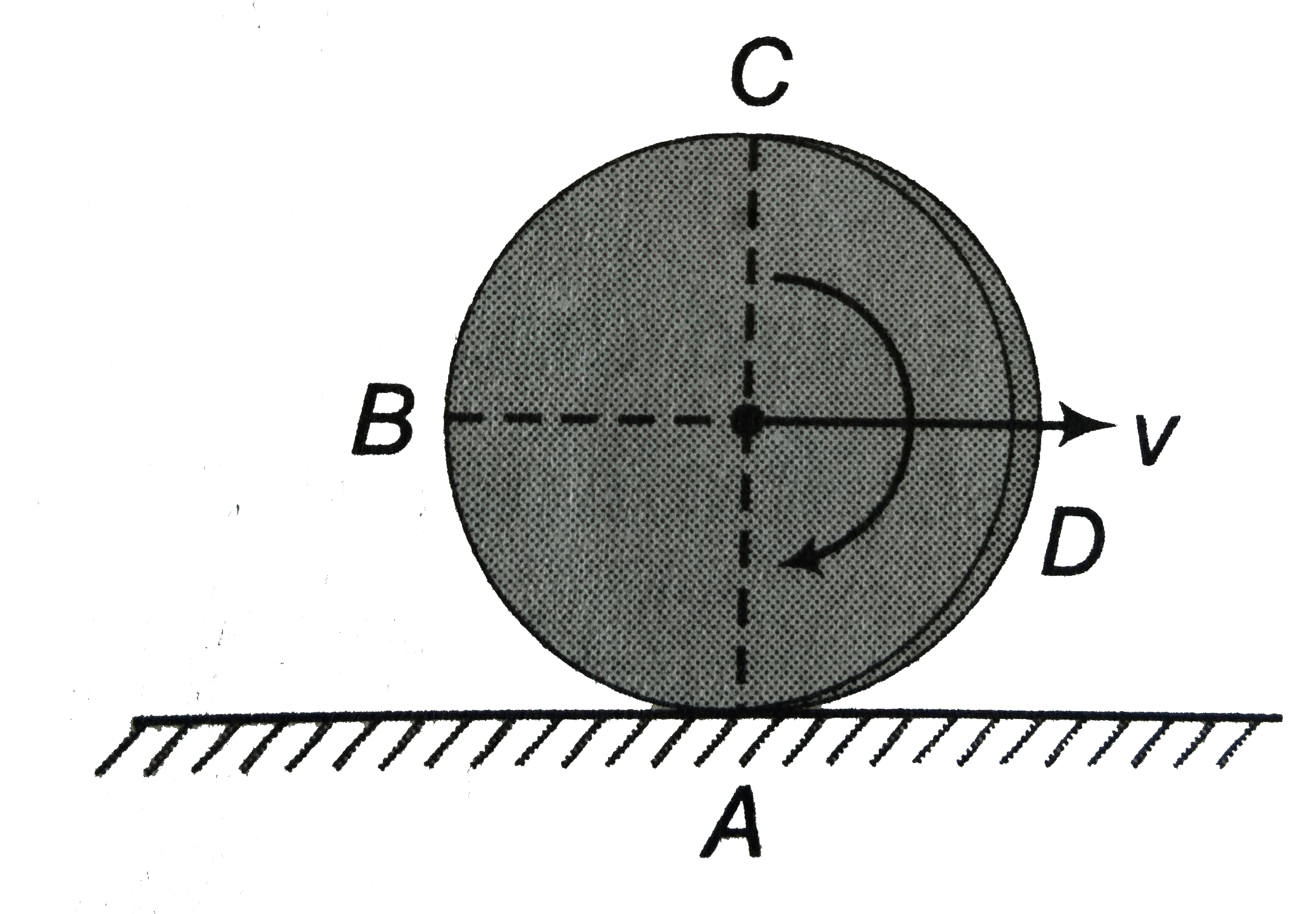Passage - II
A cylinder rolls on the plank A and B without relative sliding. C and Q are the points on the axis and surface respectively and line CQ is horizontal. The planks move with velocities −2Vˆi,Vˆi respecticely

The instantaneous axis of rotation of cylinder is
R3 from B
2R3 from B
R4 from B
R2 from B
The correct Answer is:B
Topper's Solved these Questions
- ROTATIONAL DYNAMICS BOOK - AAKASH SERIESCHAPTER - ROTATIONAL DYNAMICS EXERCISE - PRACTICE SHEET (Exercise - IV) (LEVEL - II Matrix Matching Type Questions)
2 Videos
- ROTATIONAL DYNAMICS BOOK - AAKASH SERIESCHAPTER - ROTATIONAL DYNAMICS EXERCISE - PRACTICE SHEET (Exercise - IV) (LEVEL - II Integer Type Questions)
6 Videos
- ROTATIONAL DYNAMICS BOOK - AAKASH SERIESCHAPTER - ROTATIONAL DYNAMICS EXERCISE - PRACTICE SHEET (Exercise - IV) (LEVEL - II More than One correct answer type Questions)
6 Videos
- RIVISION EXERCISEBOOK - AAKASH SERIESCHAPTER - RIVISION EXERCISEEXERCISE - MOTION IN A PLANE (LAMNI.S THEOREM)
6 Videos
- ROTATIONAL MECHANICSBOOK - AAKASH SERIESCHAPTER - ROTATIONAL MECHANICSEXERCISE - Questions for Descriptive Answers
20 Videos
Similar Questions
A cylinder rolls on the planks A and B without relative sliding. If the planks move with velocities −2vˆi,vˆi respectively and the plank A has acceleration →a(=aˆi), find the: (a) vC and vQ and (b) aC and aQ.

View SolutionA cylinder rolls on the planks A and B without relative sliding. If the planks move with velocities −2vˆi,vˆi respectively and the plank A has acceleration →a(=aˆi), find the: (a) vC and vQ and (b) aC and aQ.

View SolutionA cylinder is rolling without sliding over two horizontal planks (surfaces) 1 and 2. If the velocities of the surfaces A and B are −vˆi and 2vˆi respectively, find the:
a. Position of instantaneous axis of rotation.
b. Angular velocity of the cylinder.

View SolutionA cylinder is rolling without sliding over two horizontal planks (surfaces) 1 and 2. If the velocities of the surfaces A and B are −vˆi and 2vˆi respectively, find the:
a. Position of instantaneous axis of rotation.
b. Angular velocity of the cylinder.

View SolutionConsider a cylinder of mass M and radius R lying on a rough horizontal plane. It has a plank lying on its top as shown in the figure. A force F is applied on the plank such that the plank moves and causes the cylinder to roll. The plank always remains horizontal. There is no slipping at any point to contact.

(a) what are the directions of the fricition forces acting at A and B on the plank and the cylinder ?
(b) Calculate the acceleration of the cylinder.
(c) Find the value of frictional force at A & B.
View SolutionConsider a cylinder of mass M and radius R lying on a rough horizontal plane. It has a plank lying on its top as shown in the figure. A force F is applied on the plank such that the plank moves and causes the cylinder to roll. The plank always remains horizontal. There is no slipping at any point to contact.

(a) what are the directions of the fricition forces acting at A and B on the plank and the cylinder ?
(b) Calculate the acceleration of the cylinder.
(c) Find the value of frictional force at A & B.
View SolutionA cylinder A rolls without slipping on a plank B.The velocities of center of the cylinder and that of the plank are 4m/s and 2m/s respectively in same direction,with respect to the ground.Find the angular velocity ( in rad /sec) of the cylinder if its radius is 1m .
View Solution
A disc is rolling without slipping with linear velocity v as shown in figure. With the concept of instantaneous axis of rotation, find velocities of point A, B, C and D.
View Solution
A disc is rolling without slipping with linear velocity v as shown in figure. With the concept of instantaneous axis of rotation, find velocities of point A, B, C and D.
View SolutionA cylinder of length 2a and radius .a. has the x-axis. It two ends (plane surfaces) are at x = a and x = 3a respectively. Point chargas +q are located at x = 2a and x = 0 respectively on the axis of cylinder. The electric flux through the curved surface of cylinder is (nearly)
View Solution
